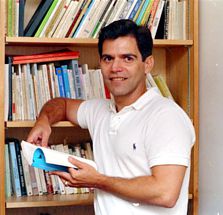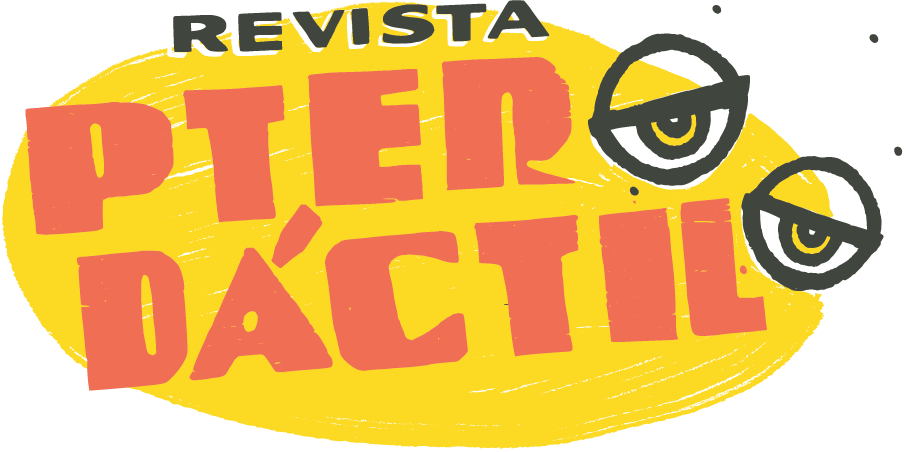
Roberto G. Fernández is a Cuban American writer whose work across the past three decades has presented a fragmented but expansive landscape of the Cuban American community in Miami and beyond. His work is populated by a recurring cast of carnavalesque characters who present a fluid and humorous depiction, and a thoughtful analysis, of issues such as the preservation of memories and traditions, the reproduction of gender roles, bilingualism, assimilation, interethnic relations, and more. Fernández was born in Cuba and immigrated to Miami with his family when he was 10 years old. He currently lives in Tallahassee, Florida where he is a professor at Florida State University.
After years of publishing in the U.S., your two most recent works have been published in Cuba and Spain respectively. What motivated that shift? How/who do you see (as) your new audiences? Where there any surprises along the way?
In the case of El príncipe y la bella cubana, the novel lended itself to be either published in Spain or in Cuba because of the subject matter. The love affair between the Spanish crown prince and the Cuban bourgeois beauty would be more interesting to a Spanish or Cuban audience. Entre dos aguas’ basic premise is to offer the Cuban reader a sample of what I have written in English.
Entre dos aguas is partially a translation of Raining Backwards but it also brings it up to date with new stories that clearly take place in a post-1994 world. What was the process of self-translation like? What relationship do you see between these two works?
Instead of self-translation, I would refer to it as an adaptation/self-translation since in many instances I omit or add elements, and use self-parody and appropriation, as I’ve done before, to offer a new optic, and hopefully reach a new audience. An example would be the two versions of the story Kon-Tiki/The Augustflower.
In regard to the relationship between Raining Backwards and Entre dos aguas, the latter is a sample of previous works in English, and two thirds of it is an echo (with partial distortion) of Raining Backwards. The remaining third is composed of new material to make the text more relevant to the readers on the island.
Your most recent novel–El Príncipe y la bella cubana–is rather different from other works in topic and style while still maintaining some signature traits like humor. How did you come by or how were you inspired to write the story of Edel and what was the research process like?
As a child, I had heard of the love affair between Edelmira and Alfonso. Edelmira was from my hometown in Cuba, and my father was a friend of her brother. Years later, remembering these anecdotes, I was inspired to write a novel about their turbulent love affair and Alfonso’s fictitious posthumous son.
The historical research process led me to interesting information about their lives, but also to dead-ends. I mostly made use of newspaper and magazine articles of the time, and books written about the Borbón family. I also read a number of memoirs and dairies written by obscure women writers of the time period between the late 1920’s to the middle 1950’s. After gathering the pertinent facts, I began to play with and distort the historical information in such a way that the reader takes for granted that I am offering them the truth, or at least plausible accounts. Though, at times, I use hyperbole to make the narrative more alluring and humorous in keeping with the style of my previous works.
Another significant shift is the narrative style which is more linear and focalized through Edel. What do you hope this narrative offers that the more fragmentary narratives of earlier works didn’t?
I started experimenting with first person narrative with the story “Encrucijada,” which appeared in La Gazeta de Cuba and was translated by Achy Obejas as “Crossroads” for the anthology Immigrant Voices. Before “Encrucijada,” most of my texts were mostly third person narrative or polyphonic. In the case of El principe, the character of Edelmira lended itself to first person narrative; not only is she keeping a diary, but she can embellish the truth at will. A linear first person narrative was more suitable to someone who is documenting her life chronologically from the 1930’s to the 1980’s, and I don’t think her character would narrate in fragmented time.
It seems like your narratives are moving in concentric circles away (in time and space) from that Little Havana neighborhood where much of your earlier fiction is set, while still maintaining links to it. Can you comment on this trajectory?
My narratives moving in concentric circles away from Little Havana correspond with the Cuban exiles and Cuban-American denizens moving away from the exile ground zero (Little Havana) to other areas of the magic city, the state and the nation. Little Havana as it was in the 1960’s does no longer exist, except in the nostalgia of those who lived there in the early decades of exile. It is a tourist destination, and eventually the domino players will be paid actors.
There have been many attempts to increase the conversation between Cuban artists on and off the island. You participated in one such exchange in 1999. How do you see your relationship to contemporary writers on the island? To what extent is it one community? Do you agree with Jorge Fornet’s assertion that the literary map of Latin America needs to be redrawn?
I do not have any personal contacts with writers on the island. I do with academics and publishers. (For instance with Ambrosio Fornet). I have read the works of a number of Cuban authors. We are narrating our circumstances from different shores. Eventually, these two narrative circles will overlap. There is much more contact now than 20 or even 10 years ago. Cubans in the US go back to Cuba quite frequently. It is more like a revolving door now, thus contacts are bound to bear fruit in literature and the arts.
What Jorge Fornet is asserting is very logical. The world is in contact flux, in constant migration and displacement in all directions. As a result, a writer can live in one place and narrate about circumstances totally foreign to the place where he resides, and still participate and be a part of that community, which in turn will influence his narrative on his other reality “the other” place, which at times could become a hyper-reality. Fluidity is the key to our interconnected world.
